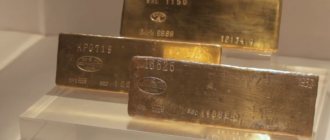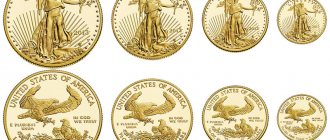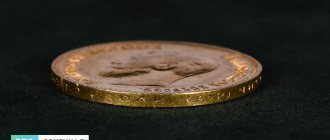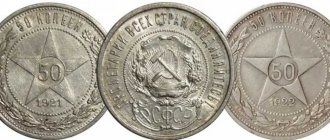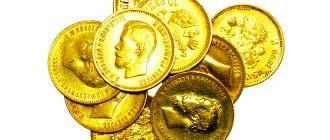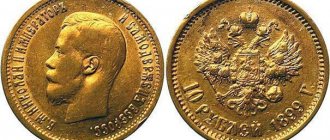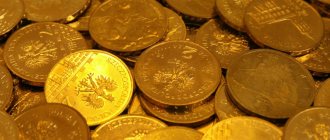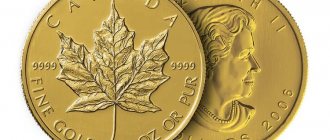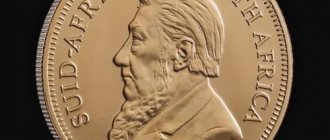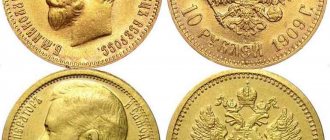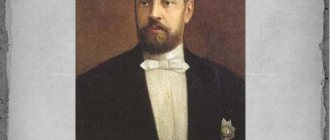One of the most popular investment coins in Europe is the Vienna Philharmoniker (in German Wiener Philharmoniker) or simply Philharmoniker, the coin is also called the Vienna Philharmonic - this is its literal translation. Philharmonic horns are produced in gold, silver and platinum. Coins are valued for their high European quality and are purchased as an investment in precious metals.
According to the World Gold Council, the Philharmonic coin became the world's best-selling coin in 1992, 1995, 1996 and 2000. The Golden Philharmoniker has been one of the best bullion coins in the world for many years.
Basic information
The offered coin is issued by the Vienna Mint.
For more than 800 years, it has minted banknotes for collectors and investors, as well as means of payment. The purity of the material and its content in each copy are guaranteed by the Central Bank of Austria. The Philharmoniker itself is considered legal tender throughout the European Union. Initially, the product was produced only in gold and immediately received great success. After that, they began to produce it in silver. The first silver edition went on sale on February 1, 2008. It was sold by the end of the same year. The face value was 1.5 euros, but its real value is much higher and only continues to grow.
Number of gold shillings issued between 1989 and 2001
| Year of minting | 200 shillings | 500 shillings | 1000 shillings | 2000 shillings |
| 1989 | — | 272000 | — | 351000 |
| 1990 | — | 162000 | — | 484500 |
| 1991 | 82500 | 146000 | — | 233500 |
| 1992 | 99000 | 176000 | — | 537000 |
| 1993 | 99500 | 126000 | — | 234000 |
| 1994 | 112000 | 121200 | 94700 | 218600 |
| 1995 | 151100 | 156000 | 57400 | 645500 |
| 1996 | 128300 | 139200 | 88000 | 377600 |
| 1997 | 115300 | 100700 | 68200 | 408300 |
| 1998 | 102800 | 90800 | 47300 | 330300 |
| 1999 | 145000 | 81600 | 44200 | 230700 |
| 2000 | 32600 | 25900 | 20500 | 245700 |
| 2001 | 24400 | 25800 | 26800 | 54700 |
About design
Austria began issuing coins after Great Britain. The main motive for them was the Vienna Opera, which is rightfully considered one of the symbols of this country. Let us add that the Vienna Philharmonic Orchestra is called one of the best in the world. Perhaps this is why these banknotes became popular far beyond Austria.
The design of all banknotes in the series was created by one person. Its author was the chief designer and engraver of the Austrian Mint, Thomas Pesendorfer. This explains why the silver Philharmoniker was released virtually unchanged. The only difference was the edge, which turned out not ribbed, but smooth. As for the main characteristics, they are the same as those of a gold banknote: denomination 100 euros, weight 1 troy ounce, diameter 37 mm. The only slight difference is the thickness. For silver it is 1.2 mm larger.
Big Phil
In 2004, the Austrian Mint released a 31.103 kg pure gold coin called the "Big Phil". The event was timed to coincide with the 15th anniversary of the issue of the first Vienna Philharmoniker coin, which became super successful. The denomination of Big Phil is 100,000 euros, diameter is 37 cm, thickness is 2 cm.
A total of 15 Big Phils were produced - according to the number of years since the creation of the Vienna Philharmoniker brand. 14 coins are in private collections, 1 coin is kept in the National Bank Museum in Vienna.
The Vienna Philharmoniker is a top-selling international bullion coin, along with such popular coins as the Maple Leaf, Krugerrand, American Eagle, Buffalo, Kangaroo and Lunar. Thanks to its maximum thinness, the coin is difficult to counterfeit.
You can buy Philharmoniker gold coins, as well as those made from other metals, in numerous numismatic stores, having first looked in the online catalog to see if they are in stock and checked the prices. You can sell coins there; most stores not only sell, but also buy coins from individuals.
Detailed description
On the obverse of the Philharmoniker you can see a set of musical instruments. In the background there is a Viennese horn, a harp, and a bassoon. A violin and cello are depicted a little closer. There is also a double bass. Above the instruments is written Wiener Philharmoniker, which translates to “Vienna Philharmonic.”
The reverse is just as interesting. It depicts an organ - the main instrument. Also on this side is the denomination, metal, fineness and net weight. At the top, in the form of an arch, the name of the republic is written: REPUBLIK ÖSTERREICH.
From the first release, the appearance of the product remains unchanged. The main markets for its sales are North America, Japan, as well as China, etc.
Why was the Philharmoniker golden series created?
These coins are initially issued as investment coins , but more often they replenish the private collections of numismatists. They can be purchased individually or in sets, which can include both coins of all four main denominations, as well as possible double and triple combinations of them.
For example, a series of two gold coins of the Vienna Philharmonic was issued in denominations of 25 and 100 euros. The total mass of the coins was 38.88 g, and the circulation was 5,000 sets.
Characteristics
Let's look at the main characteristics using the example of the Golden Philharmoniker. It is recommended to find out about them before purchasing a coin. Among the important parameters of the coin:
- issued by the Austrian Mint, which only adds to its popularity;
- the only series in euro;
- 100 euros - the denomination of a banknote weighing 1 troy ounce;
- clearly drawn obverse and reverse with images of musical instruments;
- highest standard of gold.
All this makes the product a profitable investment. Over time, its value will increase, which will generate profit. The main condition for the implementation of a banknote is the preservation of the capsule in which the coin is packaged. This capsule protects it from exposure to adverse factors, as well as various damages.
Historical reference
The size of the “Big Phil” , which is what the Philharmonicaire gold coin is called, with a face value of 100,000 euros and weighing just over 31 kg , was proportionally increased ten times relative to the 100 euro coin.
“Big Phil” came out 10 times thicker, 10 times wider and 1000 times heavier than the 1 ounce (100 euro) coin. Until 2007, it was one of the largest coins in the world, until its glory was eclipsed by the Royal Canadian Mint version, weighing 100 kg and having a face value of US$1,000,000.
For the first time, "Big Phil" was symbolically presented in front of the "Wiener Riesenrad" - a giant Ferris wheel in Vienna, which is located at the entrance to the Prater amusement park in Leopoldstadt, and one of these coins is presented in the foyer of the Munich office of , which specializes in precious metals.
Release chronology
In its first year, the coin was issued in two varieties: one ounce and ¼ ounce. In 1991, a three-gram banknote was released. Its characteristics were as follows: diameter 16 mm, thickness 1.2 mm and denomination 10 euros.
In 1994, a ½ ounce coin was released. Its parameters were as follows: 1.6 mm thickness, 28 mm diameter, and a denomination of 50 euros. In 2014, a 1/25 oz coin was released. Its denomination was 4 euros. The diameter is 13 mm and the weight is 1.24 grams. All these products differ from each other only in weight and denomination.
The mint created special issues for some memorable events. The Bolshoi Philharmoniker deserves special attention. This is a special coin that was released in 2004 for the 15th anniversary of the series. The characteristics of the banknote were impressive: one thousand ounces (31 kg), gold of the highest standard, cost 100 thousand euros. It is worth adding that this coin was considered the largest in the world until 2007. This year, the Canadian Mint released a $1 million Maple Leaf.
“Big Philharmoniker” was released in the amount of 15 pieces. This figure is probably related to the 15th anniversary of the banknote.
The next interesting copy was released on the 20th anniversary of the Philharmoniker, in 2009. It was sold for much more than the value of the gold from which it was made. The 1/25 ounce banknote was issued in honor of the 25th anniversary of the production of the Philharmonic. This happened in 2014. At the same time, special sets were released.
Platinum Philharmoniker
Metal purity - 999.5 pt.
| Denomination | 100 € | 4 € |
| Size | 1 oz | 1/25 oz. |
| Weight | 31.103 g | 1.24 g |
| Diameter | 37.0 mm | 13.0 mm |
| Thickness | 2.0 mm | 0.8 mm |
| Available | from 2021 | from 2021 |
Benefits of purchasing
Philharmoniker is one of the most popular investment coins in the world. It is known to investors, collectors and many ordinary people who are not keen on buying coins. This currency can rightfully be called liquid. It is readily sold and bought all over the world. This means that implementing it will not be difficult. Let us remember that liquidity is one of the important criteria for choosing investment coins. In addition, you should take into account the material and sample of banknotes. As for the Philharmoniker, depending on the version, it is made of gold, silver or platinum - precious metals that are in great demand. Their standard is the highest, which also adds to the popularity of the coins.
Another component of the popularity of the Philharmoniker is the authority of the Austrian mint. To issue coins, he uses exclusively high-quality, high-quality raw materials. Strict requirements for their production are guaranteed.
Philharmoniker is a profitable investment for the long term. The value of the coin is gradually but surely growing, and its purchase/sale is tax-free. All this makes the purchase a smart step towards getting rich. In addition, unlike gold bars, banknotes do not require special storage conditions. A special capsule protects them from adverse effects. In this form, a coin can last for years and even centuries.
Design development
It must be said that since the beginning of the release of Philamornikers, their design has never changed. It was designed by the chief engraver of the Austrian Mint Munze Osterreich AG, Thomas Pesendorfer, who was appointed to this high position in 1993. It was the design and development of the famous Philharmoniker that became his most famous and iconic work.
Which mint produced the coinage?
The prerequisite for the creation of the mint was an event that occurred back in 1194. At that time, Richard the Lionheart was in captivity, and for his release he had to give Duke Leopold V of Austria no less than twelve tons of silver. Of course, such a quantity of precious metal was used to produce coins.
At first the courtyard was located next to the Hoher Markt, then it was moved to Wollzeile, and from the beginning of the nineteenth century to the present day it has been located in the capital of Austria - Vienna. In addition, until 1918 there were mints in five more cities, but after the collapse of Austria-Hungary, only the central Vienna Mint remained, renamed in 1989 to the Austrian Mint, which today is a subsidiary of the National Bank of Austria.
Where to buy a Philharmoniker
The coin is sold both in bank branches and at coin dealers; we recommend choosing only certified sellers. When choosing, be sure to check the spread - the difference between the selling price of the coin and the price at which the seller buys it back.
You can buy a philharmonic coin for 85-87 thousand rubles; the coin can be bought back for 83.0-84.0 thousand rubles. Gold Philharmonikers are also offered at auctions, but purchasing them there is not the best idea, there are no guarantees that the accompanying documentation will be in order, and there is a risk of encountering a scammer. When reselling a coin, you will encounter difficulties; not every dealer will agree to purchase a Philharmonic coin purchased not from him.
It is better not to remove the investment coin from its packaging after purchase. Store it in a blister and do not lose the documentation. With this approach, the dealer will not reduce the price during resale.
Coin value
The cost of the Vienna Philharmonic coin made of gold on the market is a rather arbitrary value and depends primarily on
price fluctuations on the London Metal Exchange and the New York Mercantile Exchange.
As for the cost directly at the Austrian Mint, it is approximately as follows:
- 1 ounce – 1127 euros;
- ½ ounce – 579 euros;
- ¼ ounce – 297 euros;
- 1⁄10 ounce – 123 euros;
- 1⁄25 ounce – 56.20 euros.
These prices for Philharmoniker gold coins, due to the minimal markup, are the best offered on the market.
If you want to buy or sell a gold Philharmoniker, then you should take into account the fact that a coin that has scratches or any other visible damage automatically drops in price.
